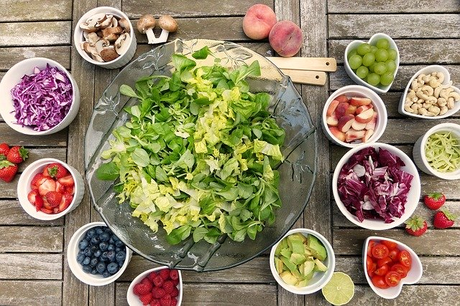
Eating healthily would be a lot easier were it not for the fact that a lot of the healthiest foods are considered by most of us to be the most unpleasant. For example, just imagine your joyful reaction on being told that chocolate is good for you … followed by the sheer horror when you realize that they’re talking about super-dark chocolate, the bitter stuff that you’d usually walk right past. And what’s the healthiest citrus fruit? It couldn’t be a zesty tangerine, could it? It has to be grapefruit; great for your heart and immune system, but an attack on the taste buds.
There is even a trope about foods that are like this: If it tastes bad, it must be good for you. And so, while most of us would rather be eating loaded fries or ice-cream sundaes, we make the smart, selfless choice and settle for the healthy option. It’s the correct option, even if it sometimes feels wrong. However, healthy eating doesn’t need to be this hard. As long as you keep in mind a few simple principles, it can be rewarding – and even tasty, at times.
1. A little seasoning goes a long way
One of the first steps many of us make when changing our diet for the healthier is to say goodbye to fries and other potato side dishes, and welcome salads to our usual rotation. It’s a smart choice – especially if you include healthy options like carrot and beetroot in your salads, doubling up on beneficial nutrients. What a lot of people don’t realise, however, is that salad needs seasoning – and will be no less healthy for it. A little salt and a pinch of black pepper will give any salad an extra dimension – as will a dash of lemon or lime juice.
2. What you eat, and how you eat it, are both important
When we are advised to make changes to our diet, it’s usually for the purpose of getting specific nutrients: avocados are loaded with a hefty nutrient profile, while cruciferous veg like broccoli and Brussels sprouts also pack a punch. These foods are also among the most commonly-cited foods people don’t like. However, you can brighten up avocado by serving it on toast for a tasty contrast between crunchy and soft, while this honey balsamic roasted brussel sprouts recipe will change the mind of even the most hardened sprout-skeptic. In each of these cases, the food retains is nutritious benefits, while gaining a new taste.
3. If you don’t like it now, give it a chance
The truth of the matter is that much of our distaste for the healthier foods to which we switch comes from unfamiliarity. Part of the reason it’s so common to find children who are fussy eaters is the fact that if they’re not familiar with a food, they assume they won’t like it. And maybe, the first few times they do try a food, they really won’t like it. Adults are just the same – it can take a few tries to get to enjoy some of the healthier foods out there, and that includes grapefruit and dark chocolate. But as your palate becomes more habituated to them, you’d be surprised by how much you can begin to enjoy a food you once disliked.
Trial and error is an important part of making the switch to healthy eating. But give those foods you “don’t like” a chance, and you may be surprised by what you learn.
Thank you for reading!

